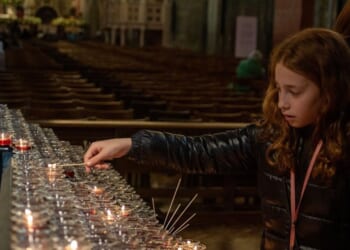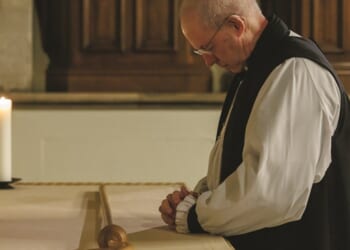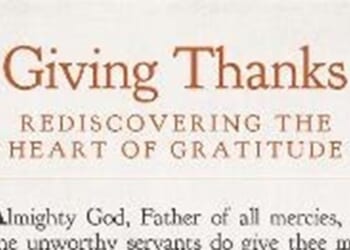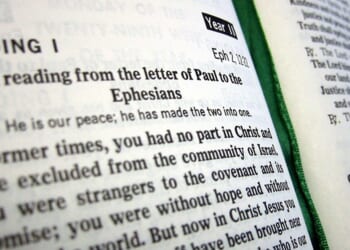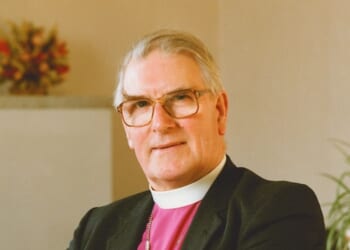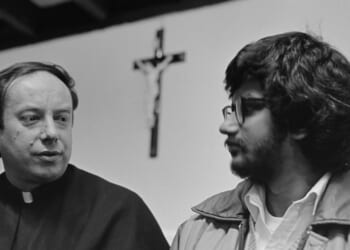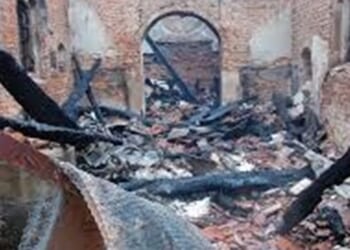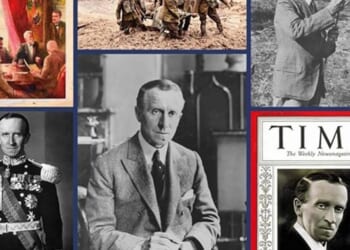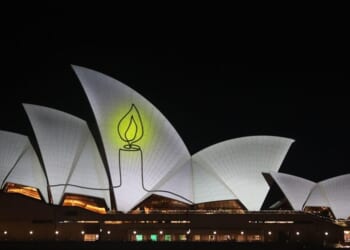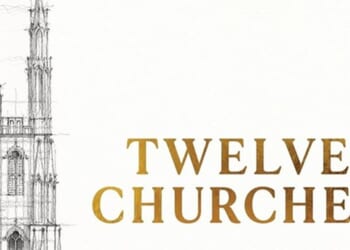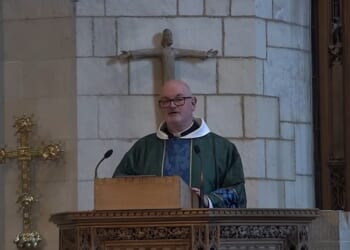A WIDOW has been granted permission to exhume the cremated remains of her late husband’s first wife to make room for his body to be buried in the same grave.
A faculty, which the Area Dean did not support, was granted by the Consistory Court of the diocese of Oxford to permit the temporary exhumation of cremated remains in a grave in the churchyard of St Michael the Archangel, Warfield, in order to facilitate a further burial in the same grave, and for the exhumed remains to be reburied immediately in the same grave.
The petitioner, Gisela Brownscombe, wished to inter the body of her late husband, John, in the grave of his first wife, Sandra, who had died in April 1998 and been buried in the churchyard of St Michael the Archangel, a Grade II* listed rural church. The cremated remains of Sandra’s mother, Florence Mitchell, who died in August 2005, had also been buried in the same grave.
But there was insufficient space within the grave to accommodate Mr Brownscombe’s remains without first exhuming Mrs Mitchell’s cremated remains and then reburying them in the same grave immediately after Mr Brownscombe’s burial.
The Area Dean of Bracknell, who was acting as “the minister” during a vacancy in the parish, did not support Mrs Brownscombe’s petition for a faculty to exhume and rebury Mrs Mitchell’s remains. He said that there were no sufficient grounds for the exhumation since there was no suggestion of a mistake in the original interment, nor any significant new pastoral considerations that met the threshold of exceptional circumstances.
He said that the argument that the exhumation was temporary and followed by immediate reinterment did not circumvent the theological presumption of permanence in Christian burial. Previous rulings had made clear, the Area Dean said, that the presumption existed “precisely to uphold the integrity of burial as a final resting place, and to resist the incremental erosion of that principle over time”.
A few days before Mr Brownscombe’s funeral was due to take place, attended by family members from abroad, Mrs Brownscombe presented an urgent petition to the Consistory Court for a faculty permitting the temporary exhumation of Mrs Mitchell’s remains.
The diocesan Chancellor, the Worshipful Judge David Hodge KC, said that the facts of this case were sufficient to pass the high threshold for the grant of exhumation faculty approval. He doubted “whether the rigours of the usual inhibition against exhumation [had] any application to a case, such as the present, of temporary exhumation carried out solely in order to facilitate a further burial in the same grave, with the exhumed remains being returned immediately to the same grave from which they were exhumed”.
But, if he was wrong on that, the Chancellor said that he considered that the petitioner’s wish to honour her late husband’s desire to be laid to rest in the existing grave of his first wife founded the necessary jurisdiction in the court to order the exhumation of Mrs Mitchell’s human remains.
There were special factors that were sufficient to make this case an exception to the normal rule that the committal of Mrs Mitchell’s remains to consecrated ground should be treated as permanent. The exhumation would be temporary, with the cremated remains being returned almost immediately to their present resting place. Any encroachment upon the norm of the permanence of Christian burial would be entirely ephemeral.
The Chancellor said that there was nothing, on the unusual facts of this case, that could possibly suggest that any undesirable precedent was, or was at risk of, being created.
The faculty was granted subject to certain conditions. The exhumation had to be undertaken immediately before Mr Brownscombe’s burial in accordance with the method statement provided by the gravediggers. So far as possible, any coffin or other receptacle containing Mrs Mitchell’s ashes was to be kept out of sight of the mourners attending the funeral. At all times, Mrs Mitchell’s cremated remains must be treated with all due care, decency, dignity, and respect, and reinterred in the same grave immediately after the mourners had left after Mr Brownscombe’s burial.


